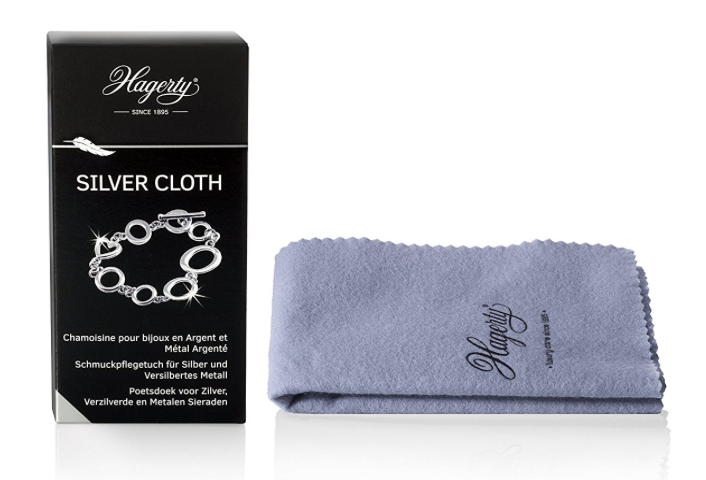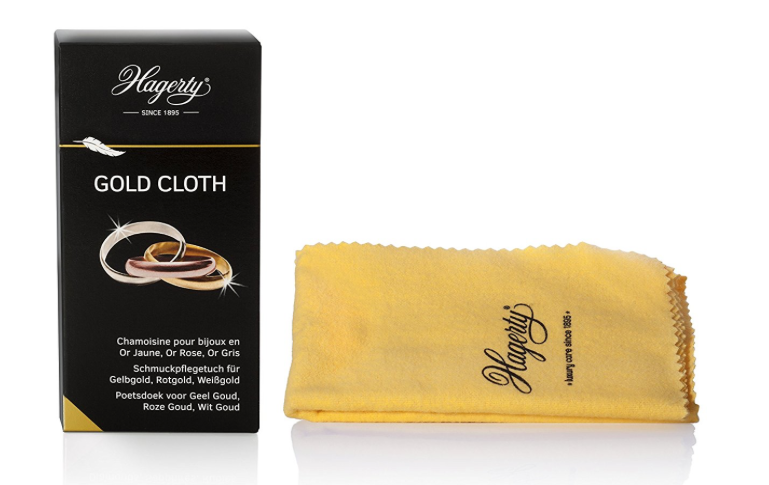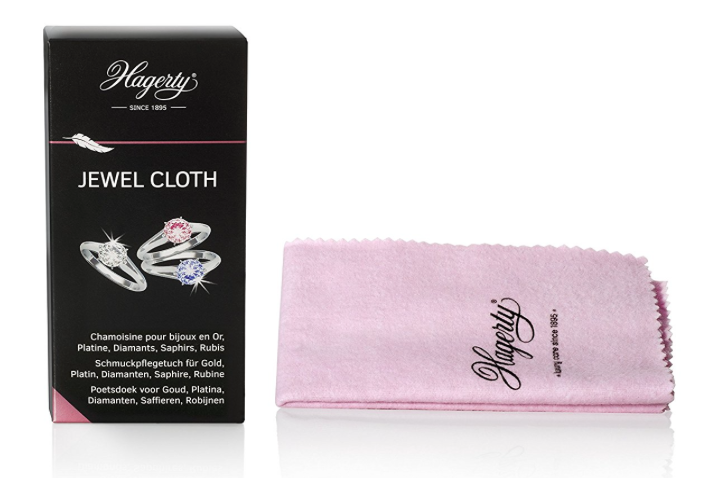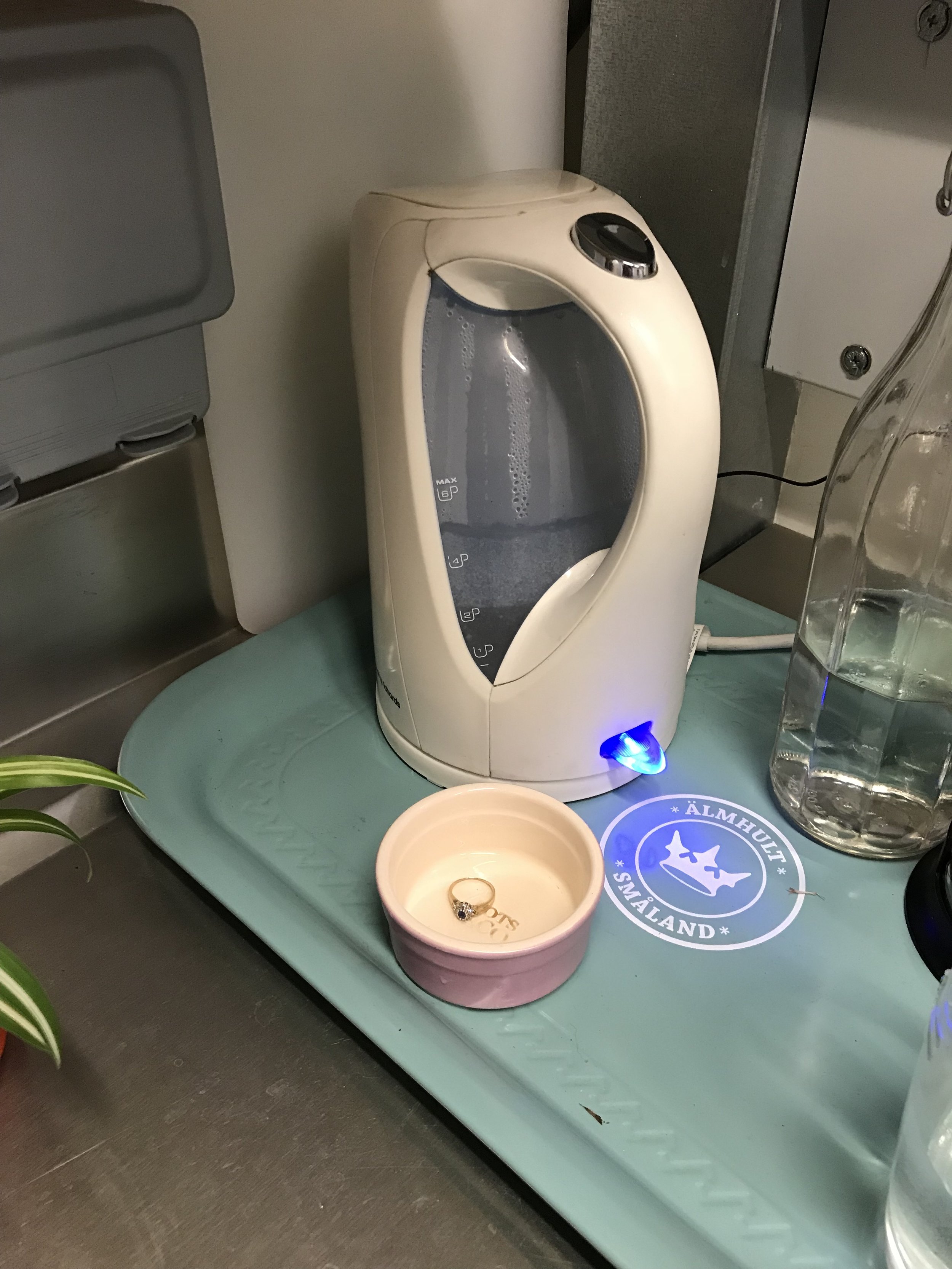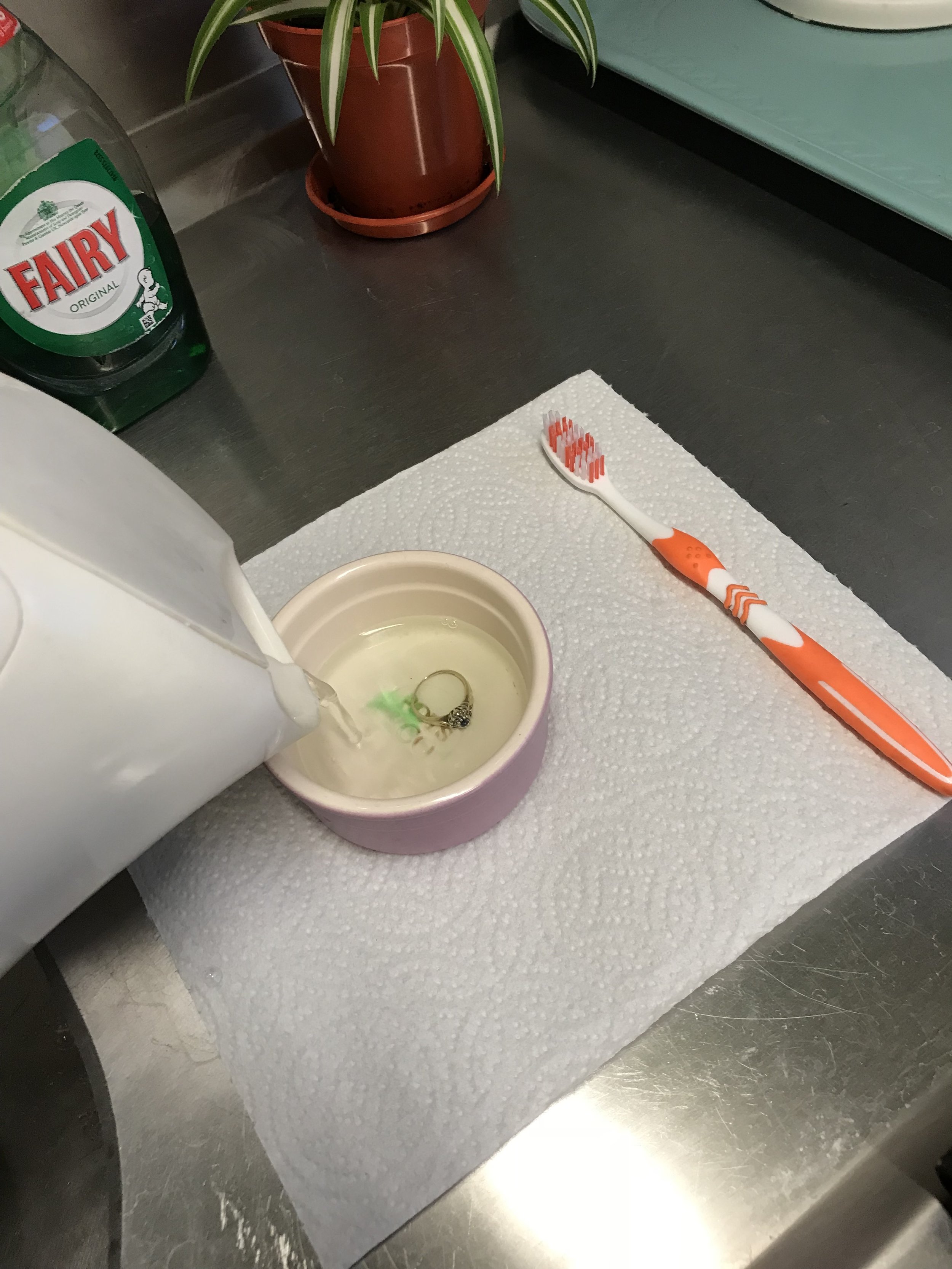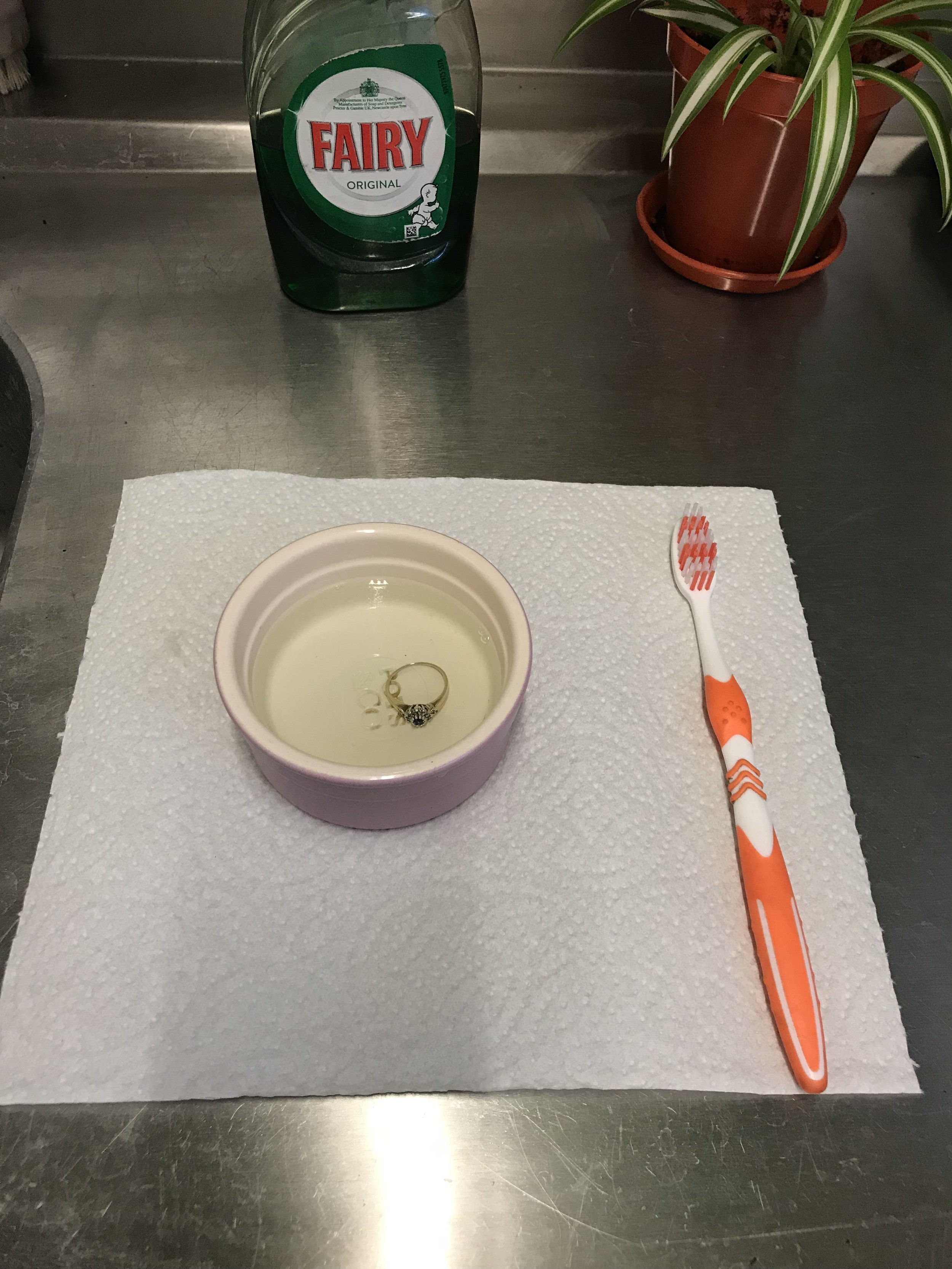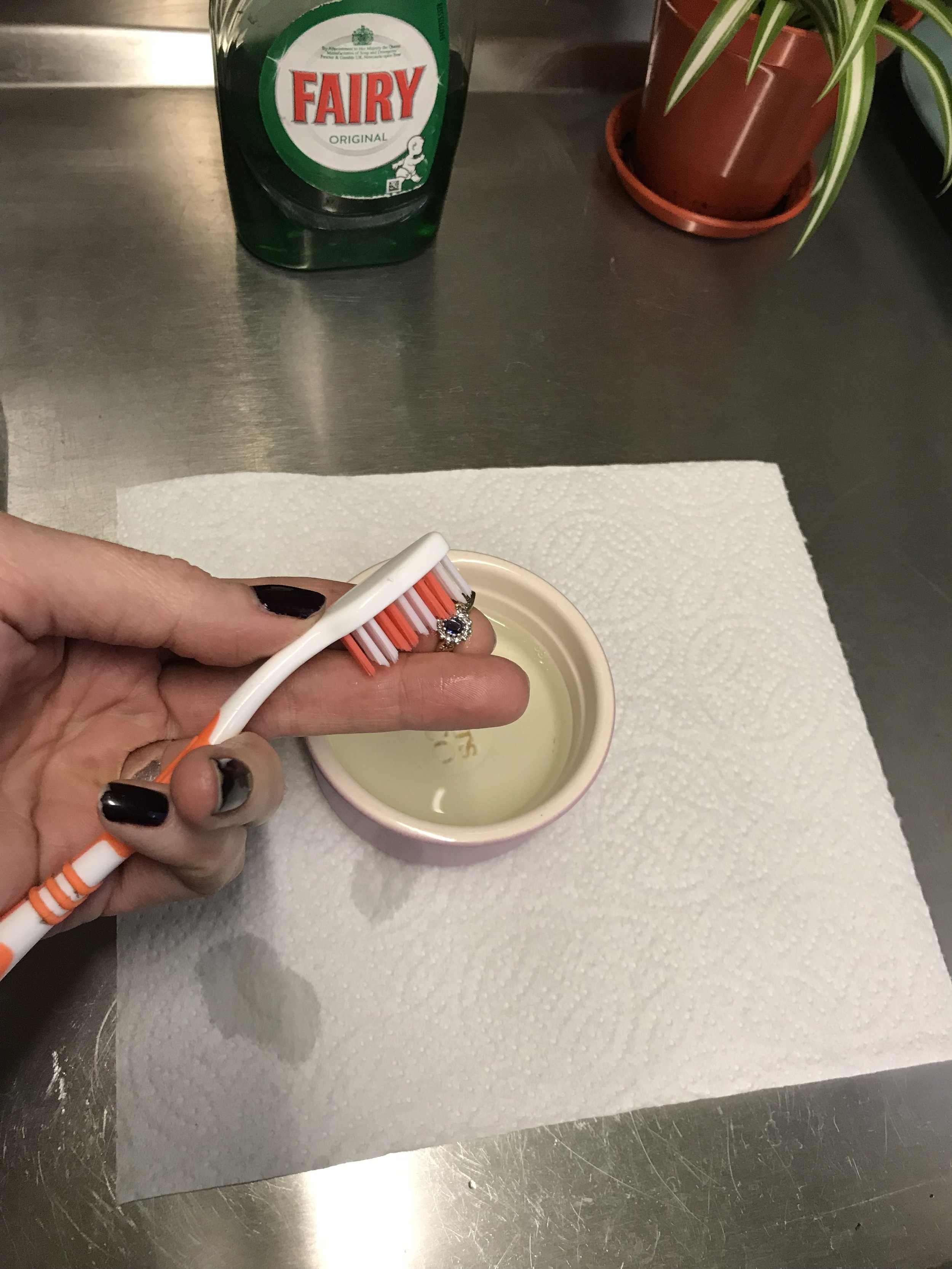How do I clean my jewellery?
Another question I get asked a lot, is "how do I clean my jewellery?" Therefore, I thought it would be good to write a blog answering this, which can hopefully be valuable to both my existing and new clients.
What is your jewellery made of?
The first thing that should be identified is what is your jewellery made of? Because the answer to that will effect how you clean it. For example, I wouldn't recommend using a polishing cloth on white gold, because it is most likely plated with rhodium. For more information read my blog on white gold. I would also advise caution when cleaning jewellery set with pearls, emeralds or opals...and this isn't an exhaustive list. If you are unsure what to do with your jewellery, feel free to get in touch.
Should I buy products?
There are many products on the market which you can buy to clean your jewellery, from liquid dips, to cloths, to industrial cleaners. I don't think you need to buy all of those, but you might find a product which works for you. What I would recommend are the cloths, followed by a soak and scrub I will outline below. If you are purchasing a cloth, go for one which is suitable for your jewellery type. Again, caution - do not use a cloth on white gold as it will remove any rhodium plating, instead skip that step and start at stage 2.
The cloths I recommend are below and available from various places. To view and purchase them on amazon, click on the individual images.
Stage 1:
Give your jewellery a good rub with a cleaning cloth appropriate to your jewellery. This will blacken the cloth and maybe add a bit of residue to the jewellery. Don't worry, this is supposed to happen. This stage is to shine the metal surface, but I wouldn't recommend doing this too regularly (weekly for example) as each rub removes a minuscule layer of the metal from your jewellery. That is what creates the shine.
Stage 2:
Place your jewellery in a container which is suitable for warm water. Boil the kettle, but allow water to cool for a bit before using. Then pour the warm (not boiling) water into the container with some fairy liquid and leave to steep for 10/15 minutes. Collected behind the gemstones and in any inlay sections is dead skin, oil, hand cream and all sorts of stuff. I know, lovely eh?! This covers the back of the gemstones and stops them sparkling as much as they should. So, this steeping allows the dirt to soften and it will come away much easier afterwards.
Stage 3:
Using a soft toothbrush give your jewellery a gentle scrub all over. If you are cleaning a gemstone set piece, make sure you clean all around the stones and particularly in around the back of the settings, removing the loosened dirt which has gathered there. You want to clean the back of the stones as much as possible. Once you've done that, rinse under warm water (especially paying attention to flush out the back) and then dry with a soft cloth or tissue.
Clean and shiny.
Your jewellery should now be clean and shiny. If your settings are quite high, there may be water trapped around the back of the stones. If this is the case, just wrap the piece in tissue and allow to dry in a warm environment (warm radiator or airing cupboard) for 10 min or so.
Every now and again it is good to get your jewellery professionally cleaned. At this point the jeweller can check that all your gemstones are secure. Settings will wear over time and this might mean you lose your stones if they became loose, so it's good to have them checked every 5 years or so depending on your wear.
If you want Karlin Anderson to professionally clean your jewellery, including any rhodium plating on the white gold, feel free to get in touch by using the contact button below.

